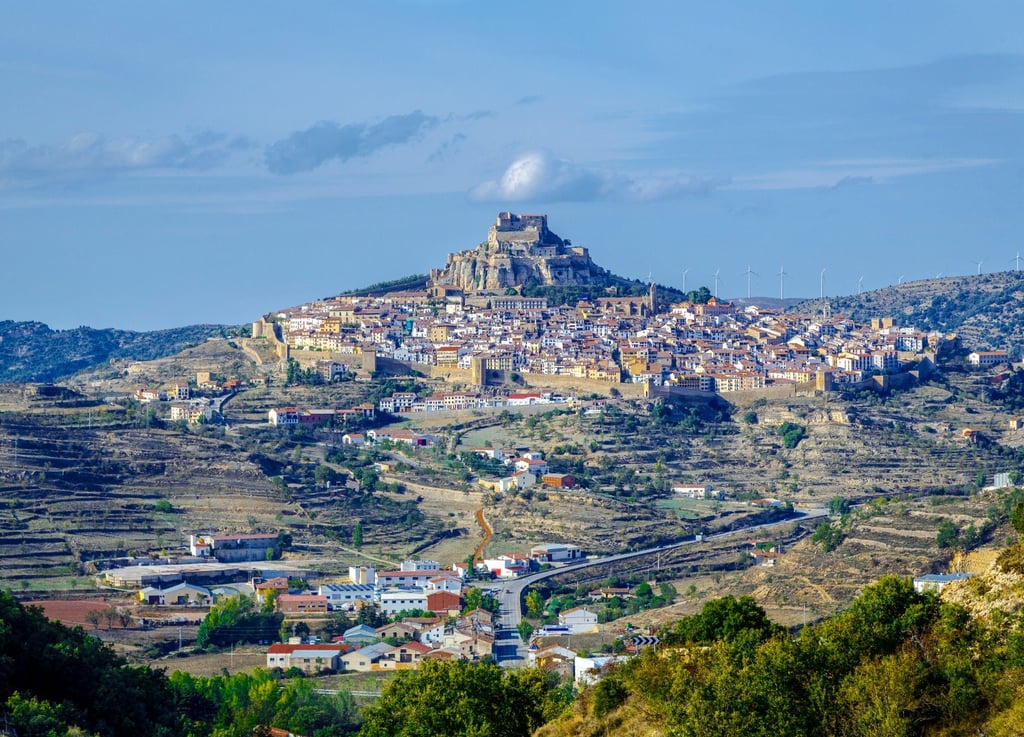Key Facts about Morella, Spain
Perched high on a rocky hill and crowned by its commanding castle, Morella feels like a step back in time. Its labyrinth of stone streets, Gothic churches, and ancient walls tell the story of centuries of history and resilience. The views from the castle stretch endlessly over the rugged landscape of Els Ports, while its welcoming locals and authentic cuisine reflect the heart of rural Spain. Whether visiting for a festival, savoring truffle-infused dishes, or simply soaking in the medieval atmosphere, Morella is a timeless jewel of the Valencian mountains.
10/7/20252 min read


Location
Morella is a striking medieval town located in the province of Castellón, within the Valencian Community of eastern Spain. It sits atop a rocky hill in the Els Ports region, about 180 km north of Valencia and 65 km inland from the Mediterranean coast.
Known for
Morella is renowned for its imposing castle, ancient stone walls, and beautifully preserved medieval streets. Often called one of Spain’s most picturesque hilltop towns, it combines dramatic architecture with deep historical significance.
Best Time to Visit
Spring (April–June): Ideal for pleasant temperatures and wildflower-filled landscapes.
Summer (July–August): Warm and lively, perfect for festivals and cultural events.
Autumn (September–October): Mild climate and quieter atmosphere.
Winter (December–February): Serene and scenic, with occasional snow adding to the fairytale charm.
Local Language
Spanish and Valencian (a regional dialect). English is spoken in tourist areas.
Currency
Euro (€).
Getting There
By car: About 2.5 hours from Valencia and 3 hours from Barcelona via scenic mountain roads.
By bus: Regular services from Castellón de la Plana and Vinaròs.
By air: Nearest airports are Castellón Airport (80 km) and Valencia Airport (170 km).
Top Attractions
Morella Castle (Castillo de Morella): A majestic fortress towering 1,000 meters above sea level, offering panoramic views.
Medieval Walls: Over 2 km of ancient walls with towers that still encircle the town.
Basilica de Santa María la Mayor: A Gothic masterpiece with intricate woodwork and stained glass.
Aqueduct of Santa Lucía: A 14th-century engineering marvel just outside the town.
Museo Temps de Dinosaures: Showcasing local dinosaur fossils and archaeological finds.
Calle Blasco de Alagón: The town’s charming main street lined with shops, cafés, and arcades.
Local Specialties
Truffles: Black truffles from nearby forests, often used in local dishes.
Cordero (lamb): Roasted or grilled, a staple of the region’s cuisine.
Embutidos: Local sausages and cured meats.
Queso de Morella: Artisanal cheese with a strong, rustic flavor.
Honey, olive oil, and pastries from local producers.
Notable Events
Sexenni Festival (every 6 years): A grand event with parades, decorations, and traditional dances dating back to the 17th century.
Sant Antoni Festival (January): Fire rituals celebrating the patron saint of animals.
Medieval Fair (Summer): Recreates the town’s historical past with costumes, crafts, and performances.
Truffle Fair (Winter): A gourmet event celebrating the prized local truffle.
Contact us
Copyright © 2025. Ralnoscape All rights reserved.
Destinations
Resources


Follow us
This website uses affiliate links which may earn a commission at no additional cost to you
